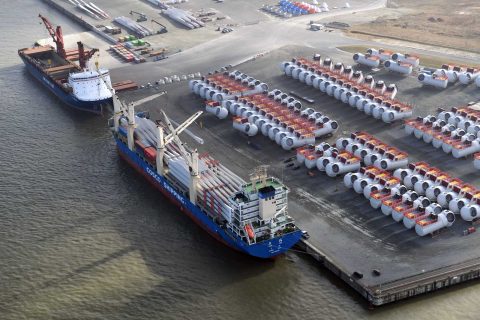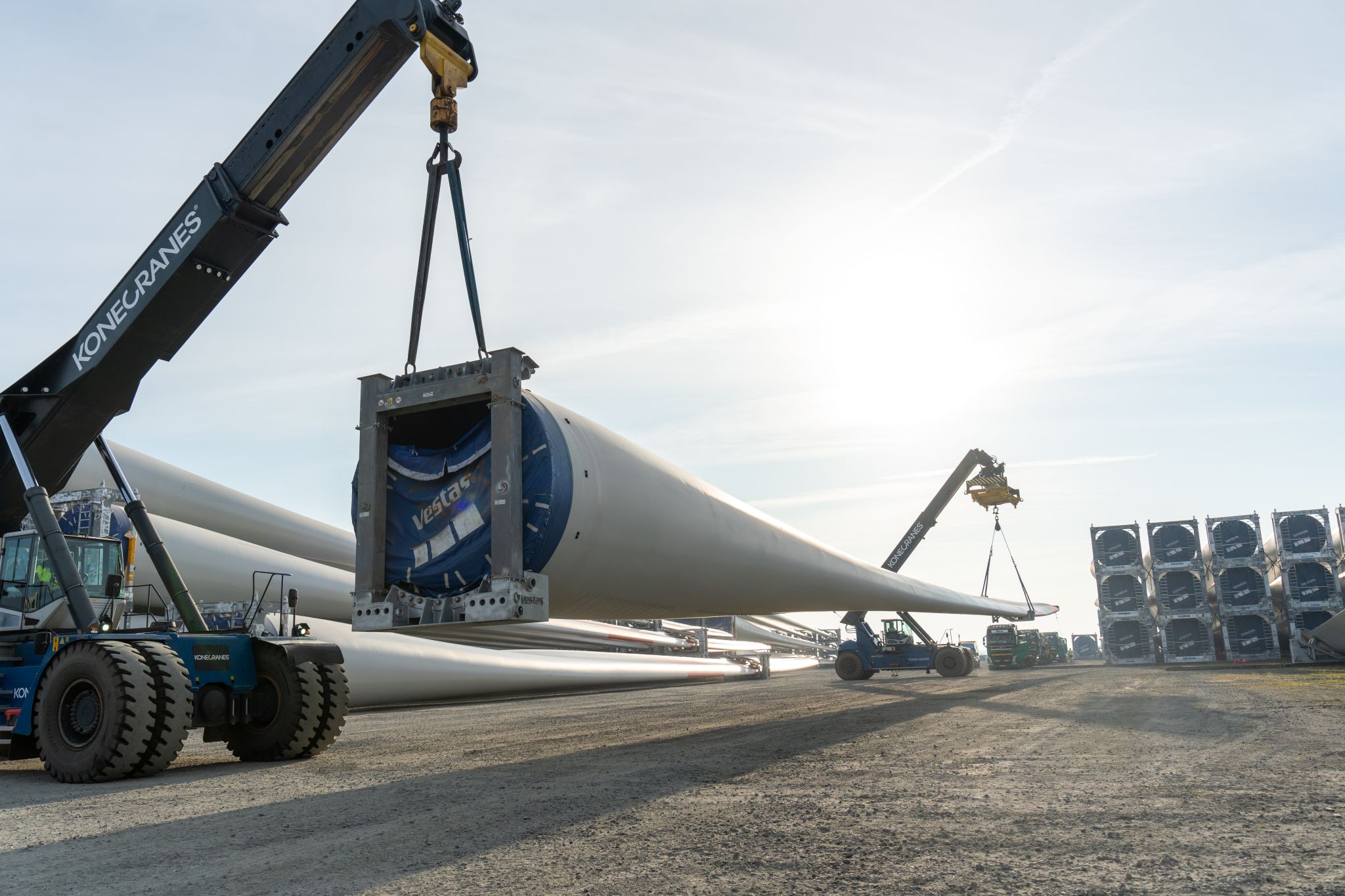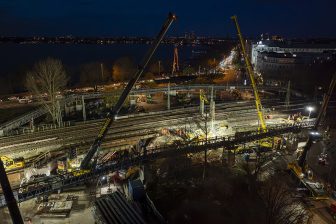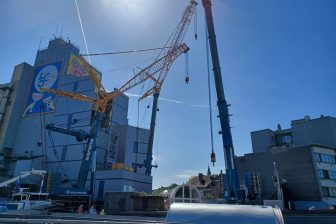
Road closure threatens German port of Cuxhaven
German Federal highway authority, Autobahn Gmbh has closed a seven-kilometre stretch of the A27 motorway between Hagen and Uthlede. However, the decision, caused by a worn water tunnel, which could cause the motorway to sink, is seriously threatening the port of Cuxhaven and its capability to service the booming wind energy sector.
According to ADAC, the embankment next to the road has already collapsed. “The affected section between Hagen im Bremisch and Uthlede is closed in both directions until further notice. The authorities are now planning a quick emergency renovation,” the ADAC statement reads.
“This could bring the expansion of onshore wind energy in Germany to a standstill,” says Arne Ehlers, deputy chairman of the Hafenwirtschaftsgemeinschaft Cuxhaven e. V. (HWG). The roadway is to be renovated and completely rebuilt starting this week; traffic will be redirected via the U28 and U33. According to a statement from Autobahn GmbH, alternative routes have also been developed for large-capacity and heavy transport. This means that accessibility to the ports in Bremerhaven and Cuxhaven will continue to be guaranteed.
However, the alternative routes require additional checks on whether they are suitable for heavy transport, or if oversized cargo transport is possible at all. “This is a big challenge, because every night on average, up to 30 trucks with rotor blades leave the port heading south,” emphasizes HWG CEO Michael de Reese.
Up to and including Friday, February 23rd, 1,800 applications for route changes had already been received by the responsible road traffic authorities. “We therefore urgently appeal to the authorities to issue the new permits quickly so as not to unnecessarily delay the planned transports,” he adds.
Hampering the wind turbine components’ transport
Massive effects of the complete motorway closure are already becoming apparent. Port customers could be forced to no longer ship rotor blades to Cuxhaven. If the A27 is not opened again for rotor blade transport in the next two weeks, they should look for alternatives. “But that is expensive and time-consuming, especially since only Cuxhaven can process very large quantities quickly,” says Ehlers.
Read more: German heavy transport woes continue, bordering on full-blown crisis
Cuxhaven is known as the most important hub for the handling of components for wind turbines. According to Karina Würtz, managing director of the Offshore Wind Energy Foundation, the rotor blades for 80 per cent of the wind turbines installed in Germany end up in the wind farms through the port of Cuxhaven. More than 300 rotor blades are currently waiting in Cuxhaven to be transported to the respective construction sites in the German hinterland.
The ports expect ADAC to soon decide whether the heavy transport can cover the closed stretch using a temporary structure.
Lack of space for wind components
Earlier this year, the port of Cuxhaven has already voiced its concerns about the infrastructure and the need for more port areas capable of carrying heavy loads to meet the need for energy transition.
The expansion goals in the area of onshore and offshore energy require a high availability of space and quayside facilities in German seaports for various reasons; Given the particular focus of the offshore wind expansion goals on the North Sea, North Sea seaports are of particular importance. Various studies and forecasts now warn of a blatant lack of port space capable of carrying heavy loads.

“The port is one of the most important hubs for the entire wind energy industry. Almost all manufacturers land their rotor blades via Cuxhaven. This also applies to the components of onshore wind turbines. We have seen for years that both the number of new systems being built and the number of newly approved systems are increasing. This is a very positive development, but it also means that the situation at the ports needs to be improved in the future. The path to 10,000 MW annually has been taken. Now it is important to clarify the financing for Cuxhaven as quickly as possible so that the expansion of wind energy on land does not lead to an avoidable heart attack,” adds Bärbel Heidebroek, President of the Federal Wind Energy Association BWE.
Michael de Reese, Chairman of the Cuxhaven Port Industry Association, said, “Cuxhaven is the only port with a valid planning approval decision for expansion. Only here can the areas necessary for the expansion of renewable energies be created within the required time frame. The German energy transition is a political goal and a national task. The federal government must therefore also get involved here.”
“The private sector and the state of Lower Saxony have already committed a third of the necessary financial resources totalling around 300 million euros. If the federal government wants to achieve its own goals, it must get involved right now. Here, May 31st is the deadline for a binding financing commitment. Otherwise, a large part of the expansion goals will be at risk. The federal government is also involved in other key infrastructure projects, such as the expansion of motorways,” Reese said
Every year, around 15,000 large components for wind turbines on land and at sea are delivered via the deep-water terminal in Cuxhaven, including around 80 per cent of all rotor blades for wind turbines on land.
You just read one of our premium articles free of charge
Register now to keep reading premium articles.




